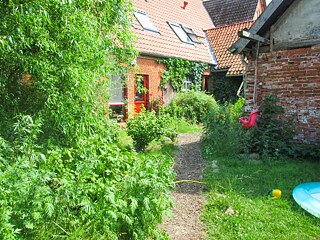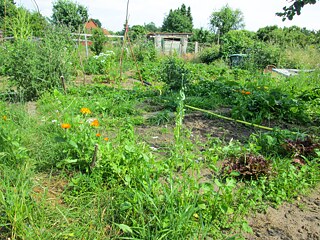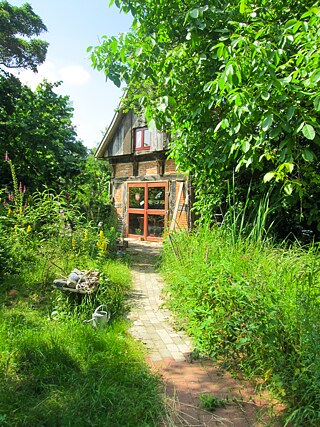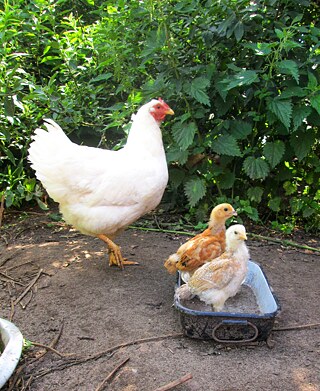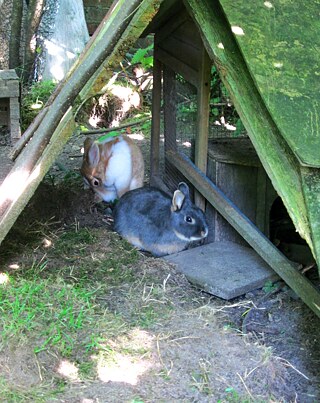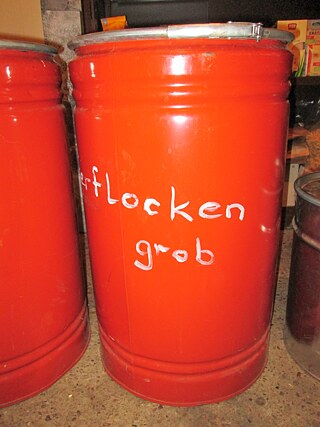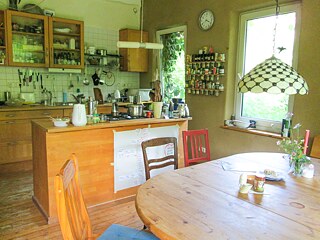Sustainable Communities
Stedorf farm community: modern-style sustainable rural living
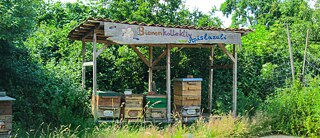
By Marina Bierbrauer
The Stedorf farm community is situated in Dörverden, in the German state of Lower Saxony, a little over 50 km south-east of Bremen. The historic farm, with its multiple buildings on an extensive area of land, now has eight residential units with a total living area of 638 m². Around 25 people, young and old, live here in small apartments and shared flats. The project was started back in 1997 by an incorporated society, the AllerWohnen e.G. self-administering co-operative. Jutta, who has lived here for many years now, agreed to spend the afternoon showing me around the project, followed by a conversation conducted over a delicious drink of apple juice prepared from the apples in her own garden.
Sustainable living in every way
Creating a sustainable and environmentally responsible lifestyle is the primary objective for the Stedorf farm community, across every aspect of everyday life.Right from the outset, in the work on restoring and renovating the historic buildings, there was a clear commitment to using environmentally friendly materials – as insulation and paint ingredients, for example – and to the regional sourcing of construction timber and firewood wherever possible. The heating and hot water system is powered by solar energy, and while there are problems at the moment with the photovoltaic plant for electricity generation, planning is under way for a replacement solution.
As well as offering plenty of room for relaxation, recreation and barbecuing, the 10,000 m² site provides an ideal habitat for many animals, including birds, insects and a range of aquatic species in the specially created pond.
The many facets of a sustainable diet
When it comes to nutrition, the focus is on organic quality, regional sourcing, and using produce when it is in season. The community is able to produce a proportion of its own food, with more than 50 fruit trees, berry bushes, a generously sized and extremely colourful vegetable and herb garden, a small family of hens and a beekeeping operation. Other fresh produce is purchased via a weekly “fruit and vegetable box” scheme. Almost everything else they need is available in the Food Co-op, an organic wholesale supplier. Buying in bulk from this source has two major advantages for the community residents: lower prices, and for many products, eliminating the need for packaging. Residents uplift produce from the co-op as and when they need it, and pay a monthly invoice. Jutta says that toilet paper is about the only thing she still has to buy through “normal” channels.Sustainable mobility and the sharing economy
The community has a jointly owned electric car, although it is not called into service very often. Cycling is the preferred form of transport whenever possible, and offers a fast and efficient way to travel to the closest cities of Bremen and Verder, even from this remote rural location, thanks to the nearby railway station. The community also applies the principles of a sharing economy in many other ways: books, tools, clothing, tents and much more besides are shared between the residents, so that people don’t have to keep buying things only for themselves. This saves valuable resources especially for items that are not needed every day. The community members also share another very important resource, in the form of their skills and abilities.The talents to be found within the residents are many and varied – a particular artisan craft, gardening or beekeeping – but whatever their strong suit happens to be, community members are encouraged to put it to use for the common good. The community is also active politically, taking a stand on environmental issues and working to increase awareness of these issues.
Relationships and conflict management
Is there ever a problem with conflicts and misunderstandings, as you might expect within such a large group of people living together? Jutta tells me that the basic recipe for good relationships within the community is a willingness to self-regulate, plus consensus rather than majority-based decision-making. Finding new members is never a problem, she says – on the contrary, the demand for accommodation has long outstripped supply. For decisions on the admission of new members, the group relies on its accumulated experience in this domain, and most new arrivals are asked to complete a probation period.
Conflicts do of course arise from time to time, Jutta says. So to boost group cohesion and discuss and clarify any problems, community council meetings are held twice a month. Mediation services are also available from other similar residential projects, chaired by a neutral outside moderator. According to Jutta, the way in which tasks are allocated between the members of a residential project like this one means that she spends less time on daily chores, such as housework, but has to put more effort into communicating and interacting with her fellow-residents.
Sustainable finance and perspectives for the future
The project is cooperatively administered and financed by a cooperative, the incorporated society AllerWohnen e.G., which now has five such projects. Each member of the cooperative pays an investment contribution, refundable on exit, and the Stedorf farm community also pays a collective lease to the cooperative, levied on the residents on the basis of the area of their dwelling or room. Individual financial circumstances are also taken into account. In addition, the cooperative has made successful use of loans from KfW, the German state-owned investment and development bank, for its major projects and construction initiatives. The finances of AllerWohnen e.G. are posted on the cooperative’s website for all to see.As well as continuing its current portfolio of successful projects, the cooperative plans to launch further ventures of this type. But rather than acquiring new sites or buildings on its own initiative, the cooperative responds to approaches from groups with a specific idea in mind, with a view to joining up as a new member. It has proved much easier to create and finance a new residential project as a cooperative venture than for a single party to start out on its own.
